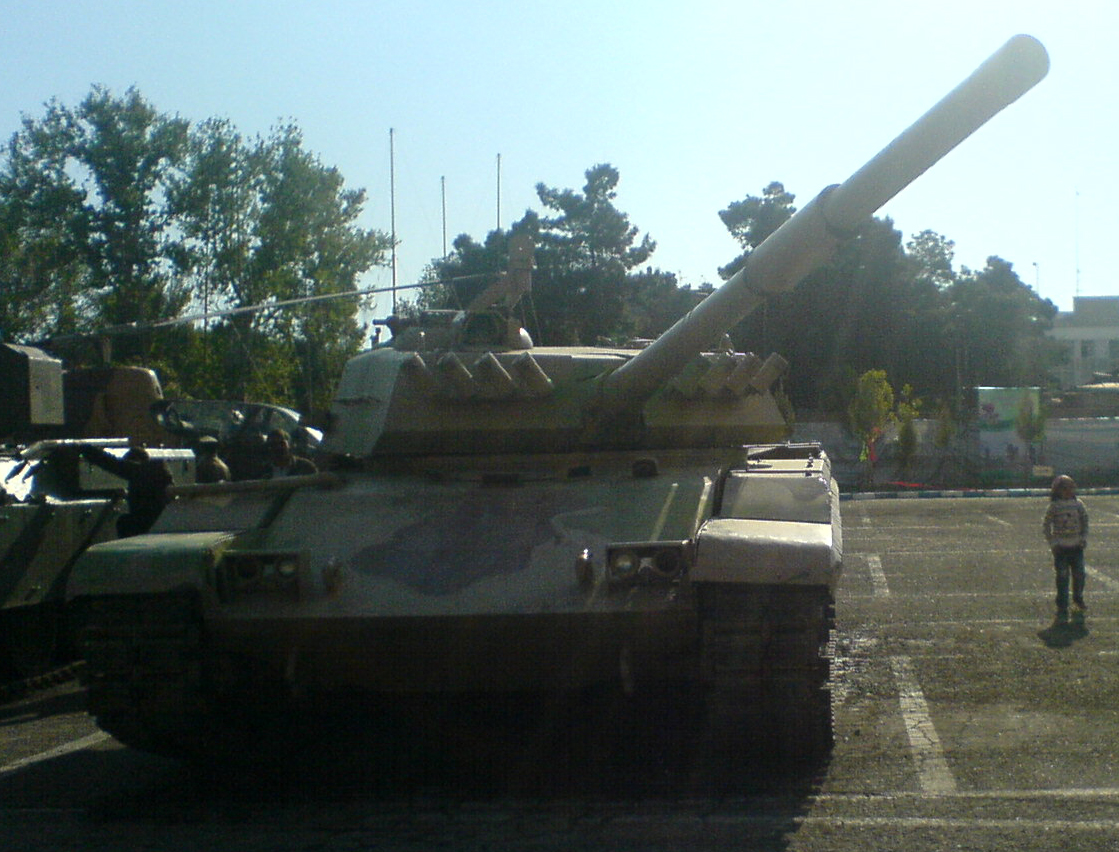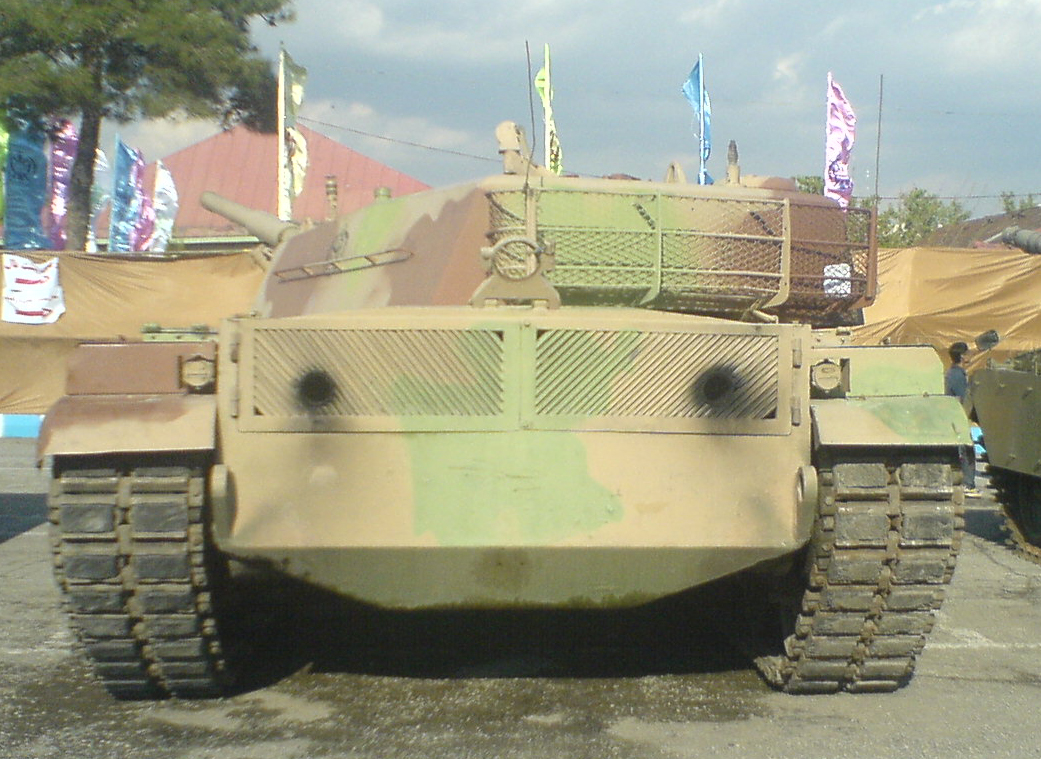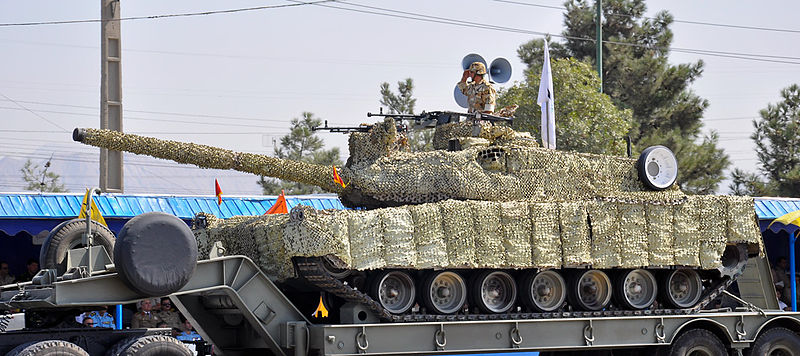The Iranian Abrams
The Zulfiqar (or "Zolfaqar") is nowadays Iran's Main Battle Tank, and logically attracted all the attention of world defense experts, due to Iran's status on the international scene. The Zulfiqar or Zulfeqhar is still quite a mysterious tank, even difficult to class under the 2nd or 3rd generation, and which apparently was under the making right after the Iran-Iraq war, now on its third evolution.Development
This MBT was named after the legendary sword of Ali, the first Shiite Imam. Brigadier General Mir-Younes Masoumzadeh is often cited as the genitor of this tank, as deputy ground force commander for research and self-sufficiency of the armed forces in the early 1980s. Tank battles occurred in the Iran-Iraq war, giving the opportunity for the post-revolutionary Iranian armored divisions to test their mettle against a wide array of Iraqi tanks (mostly Soviet-built or Chinese-built models), with both Western models from before the 1979 revolution (mostly American and British) and from the Soviet Union after this date. Current MBTs involved in these actions were the Chieftain (now Mobarez), M47 , M60, T-54/55 and Type 59 (now modernized under the T-72Z program) T-62, and and 69. After the war, T-72S (partly locally built) were acquired in 1993. From all array of foreign technologies, the self-sufficiency of the armed forces was able to test and choose the best technologies for the first true 100% local tank design, which also integrates the whole Iran/Iraq war experience into effect.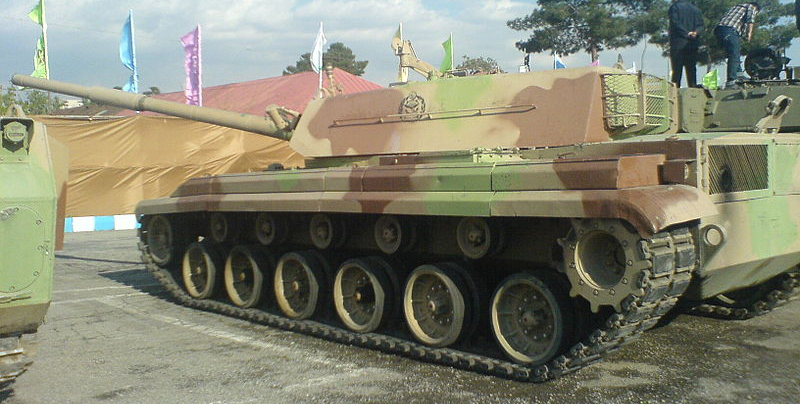
Most experts agree that the 1993 (1st series) was a 2nd generation MBT. Lieutenant General Mohammad Reza Ashtiani announced in 1997 that the mass production of Zulfiqar tanks started 1996 was in progress, and in late July 1997 Iranian President Hashemi Rafsanjani formally inaugurated the Shahid Kolah Dooz Industrial Complex in charge of Zulfiqar and Boragh APC. In between the second version was developed as a testbed in the 2000s, and the third version was officially announced in February 2013 with a whole array of improvements (up to a 3rd generation standard MBT).
Wikipedia's page in Farsi reveals that the first prototype was developed in 1372 (local calendar =1994) and production lines were set up in the summer of 1376 (1998) in the industrial complex of the martyrs? and since 1377 (1999) has been in service with the Iranian armed forces. The armament is based on the Soviet-built 125 mm smoothbore cannon of the T-72S, locally produced. The gun is fully stabilized and capable of firing on the move. The Fire Control System was apparently derived from a Slovenian model and suspensions systems and roadwheels from the M60. The Official website of the Ministry of Defense states that T-72 modern FCS equipment and 125 mm ammunitions are now produced also in Iran. According to estimates in 2010 about 100 Zulfiqars were in service.
Design
General Considerations: Most of what experts knows is what they just saw when comparing photos and crossing the few official statements. Both the Osorio and Abrams seemed to have been considered as possible inspirations and bore indeed some resemblance to the Zulfiqar. Also, observations showed roadwheels and suspensions probably from the M60 and a gun from the T-72S or Zafir-74 MBT.Mobility
It depends on a locally built (no indication if it's derived from the T-72Z or M60 power plant) 12-cylinder diesel of 780 hp or 630 kW (Zulfiqar 1) to the AVDS-1790 of 1000 hp on the Zulfiqar 3, which is more suited to the generous dimensions and weight of the tank. According to Iranian Wikipedia, the Tank engine was purchased from Ukraine in the early models but upgraded and fully constructed in Iran afterward. This engine is connected to a 6-gear SPAT 1200 automatic transmission. Estimated Power/weight figures are 21.7 hp/ton on the Zulfiqar 1 and 17.85 hp/ton on the Zulfiqar 3 which is much heavier. This gave a top speed of 43 mph on average, for a 280 miles range.The drivetrain comprises seven doubled roadwheels per side of the type used on the M-60/Sabalan for commonality of parts, but the presence of side skirts prevent to see the detail of the suspension design, which are torsion bars systems with swing arms and shock dampers derived from the M60 but reinforced. An extra pair on the front served as tensioner/idlers. Drive sprockets are on the rear, right with the transmission. Tracks are also of the same design of the M60, with a pair of rubber shoes on each double pin link. The Zulfiqar is amphibious and can ford up to 1.60 m of water but no details are available if fitted with a snorkel. The driver sat on the left, with a traversing hatch and three periscopic sights.
Armament
The turret is large and roomy due to the adoption of an autoloader early on, of the type found on the T-72Z. On the Zulfiqar 1, the main smoothbore gun was the 2A46 fitted with a fume extractor. The early turret had a boxy shape with flat sides, while the Zulfiqar 3 turret had sloped sides and is larger, probably to accommodate larger composite armor modules. The commander cupola is placed on the right-hand side. The gunner is located apparently on the left-hand side, with his own hatch. In addition to the main gun, there is a coaxial 7.62 mm MG3 machine gun, a Russian-made 12.7 mm DsHk heavy machine gun located on the front of the roof, over the gun, and another manned by the commander, while the gunner is given another MG3 on a ring mount.The Zulfiqar 3 2A46M main gun is locally built and fitted with a modified autoloader. Information about ammunitions is scarce, however, the Ammunition Group of the Iranian Defense Industries Organization mass-produces a standard HE round with a 23 kgs (51 lb) propellant charge and 3 kg warhead registering a muzzle velocity of 850 m/sec. (2,800 ft/s). We can only speculate about Russian-made HESH, HEAT and APFSDS rounds being carried, or their location inside the hull in addition to the turret. Indeed the T-72 autoloader is a drum-type located under the turret and turning with its base.
According to a Russian manual, this carousel manages 22 rounds. There is a manual brake drive handle, specific bearings, a Manual and electromechanical drives, a distribution unit, a memory unit, loading port actuator, cover, framework, carousel brake and link from manual drive to brake. Therefore, the hull extra rounds must be used for reloading the carousel from the inside and are probably located under the turret, and into floor secured compartments. Loading time is 6.5 sec., max. cycle time is 15 sec. and manual reload time for the entire carousel by a skilled crew is 13 to 15 min. on average.
The gun is fully stabilized, enabling fire on the move thanks to the Slovenian EFCS-3 fire control system also shared by the Zafir-74, but there is no indication of hunter-killer capabilities or of the state of the ballistic computer. Mangifications details for the persicopic sights are ignored but thermal vision is enabled, as well as collective NBC protection. Other equipment includes an automatic fire extinguisher for the crew compartment and engine bay, a slight overpressure system inside the turret and exhaust fume extractor.
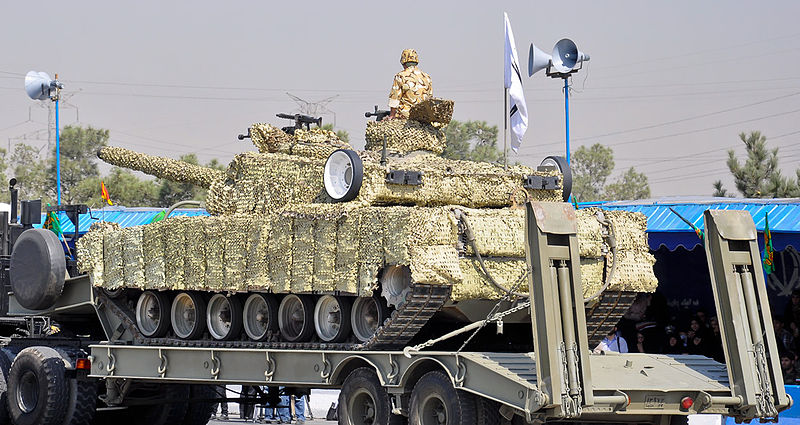
Protection
The hull is made of steel RHA welded plates, the glacis shows an inclination comparable to the Chieftain and T-72. The hull's sizes are divided into six large armored modules above the catwalks that can be replaced and upgraded very easily. Experts esteemed the Iranian inspired themselves both from the 1980s T-72Z standard active protection (ERA) and Chieftain's armor package. It is therefore supposed to deal with HEAT rounds as well as APFSDS. Details are obviously highly confidential. No ERA bricks, however, were ever seen on Zulfiqar, so the observed protection is only passive. The turret (Zulfiqar 3) is well inspired by the Abrams and K1-88South Korean K1 in shape. The turret rear are given large storage bins similar to those of the abrams. Since views from above are rare, there is no evidence blow-off panels similar to those of the Leopard 2 and Abrams are fitted over the ammunition storage in the turret basket. For active protection, there is a laser-warning pod on the turret (covering 360 degrees on the horizon and 60 degrees in elevation) and two sets of smoke launchers of the standard NATO type on the front faces of the turret. Situational awareness especially in an urban environment is provided by a set of roof cameras covering the surroundings.Variants
Zulfiqar 1
This early model is based on the M60 chassis and parts dating back from before 1979. Modifications are extensive, comprising a new hull, new turret with composite armor, and the 125 mm 2A46 Smoothbore cannon from the T-72. It was first revealed in public in 1994 and only six prototypes were completed and field tested in 1997, but no production resulted in this first Iranian MBT. Among others it can be distinguished by its characteristic rear slats exhausts identical to the M60, 6 ribbed aluminum road wheels per side, bare turret with trash-can lid, gun mantlet without canvas covers and mount for a coaxial LMG.Zulfiqar 2
This interim prototype served a test bed for a new, stretched hull with an extra pair of roadwheels and moreover a new and more powerful engine. Others possible features include an improved autoloader for the main gun, now the 2A46M from the local Safir-74 MBT. It is recognisable for its closer "weave" engine access doors and exhausts, seven steel unribbed roadwheels, bare turret with trash-can lid no gun mantlet canvas cover as the Zulfiqar-1.Zulfiqar 3
The only production MBTs of the whole series, were derived from the Zulfiqar-2. Although similar in many ways, the turret is modified, smoke mortars added, the fire control system is considerably upgraded, as well as the chassis, engine and main gun. The 2A46M is coupled with a new laser rangefinder, the turret is reinforced, and the drivetrain received an armored skirt protection. About a hundred (estimated) were built so far. Among others, they have downwards facing slats exhausts and access panels at the rear, new brake light and towing pintle, plus internal drive sprockets, new hatches for the TC and gunner, and extra 12.7 mm DsHk on the covered gun mantlet, and EFCS gunner's sight.Zulfiqar 3 specifications | |
| Dimensions : | 9.20 x 3.6 m x 2.5 m (30.2 x 11.1 x 8.2 in) |
| Total weight, battle ready | 52 tons (114,640 lbs) |
| Crew | 3 (commander, driver, gunner). |
| Propulsion | AVDS-1790 diesel 1000 bhp (1.100 Kw) 17.85 hp/ton |
| Speed | 70 km/h road/cross-country (43 mph) |
| Range/consumption | 450 km (280 mi) |
| Armament | One 2A46M 125 mm sb (4.92 in) gun 1-2 12.7 mm (0.5 in) DsHk HMGs roof One coaxial 7.62 mm MG3 (0.3 in) LMG One roof mounted AA MG3 7.62 mm (0.3 in)LMG |
| Armor | Composite. Classified. |
| Ammunition used | HESH, HE, HEAT, APDS |
| Total production | 100 |
Illustrations

Zulfiqar I in 1998 with the "southern" pattern.

Zulfiqar 2 prototype in the 2000s with the desert pattern.

Camouflaged Zulfiqar III (northern pattern based on greys). At least five camouflage patterns were identified.

Zulfiqar III with another variant of the 4-tone camouflage pattern in 2012-2013.
Video about the Zulfiqar
I do not own the rights to this video. It is shared solely for educational purposes
Links
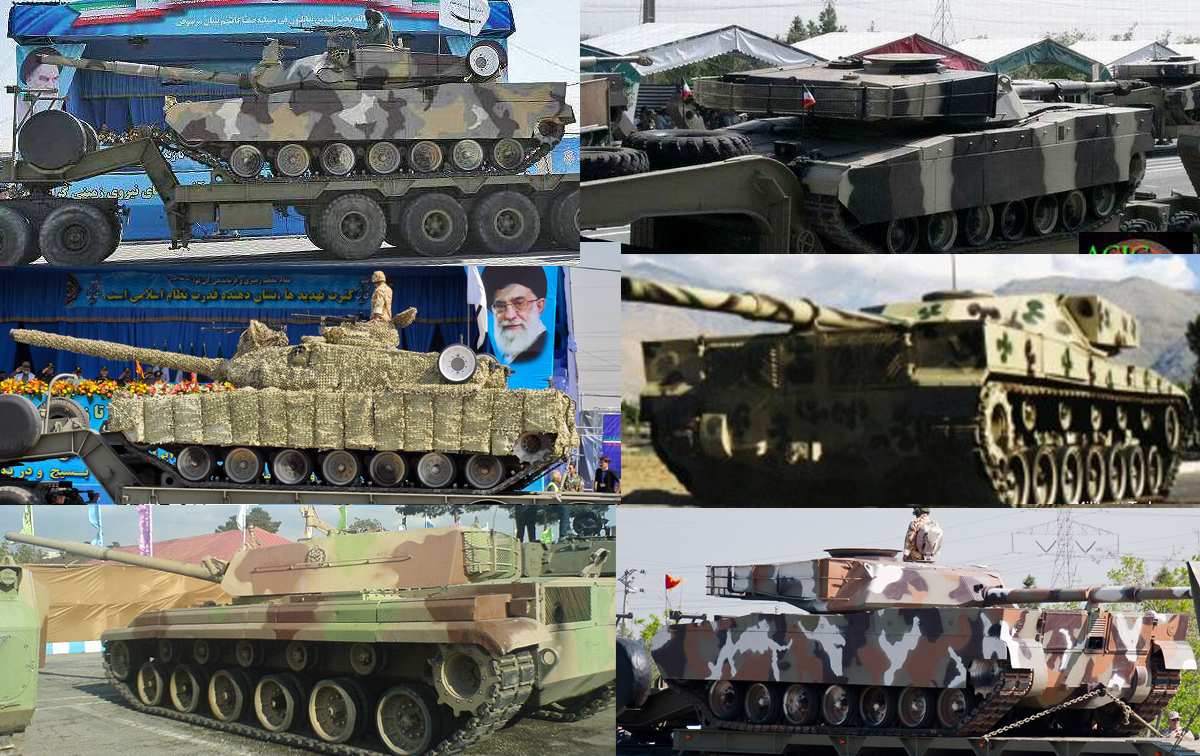
Camouflage patterns from various interesting sources found on the web.
